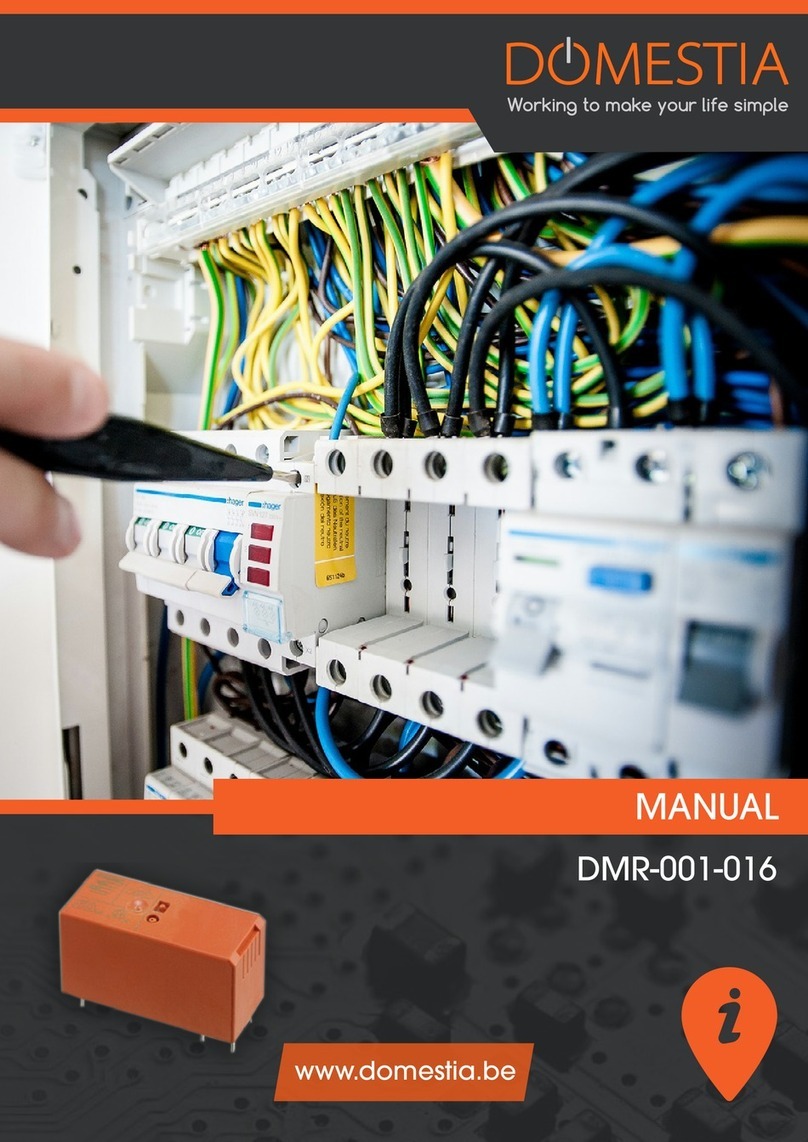
Starng from the Switch All On mode (see above), press once on the DOWN buon when all the
outputs are acvated. At that me, LEDs are lit, together with all the LEDs from the
previous conguraon (by default: all).
Use the LEFT and RIGHT buons to choose the outputs. Press on the CENTER buon to select or
deselect an output.
To leave the Select Mode, press once on the UP buon to return to the Switch On All mode.
Programming the Switch All O mode is idencal to programming the Switch All On funcon. To access it,
press the DOWN buon in Operang mode unl LEDs are lit.
You then have to go to the room in queson and press on the PB that should switch on everything. By pres-
sing on the selected push buon, the power supply is interrupted momentarily at that point: which means
that the addressing is recorded. Repeat the operaon for each push buon that you want to combine at
that same point.
If you want to add or remove certain simulaon points, press once on the DOWN buon when all the
outputs are acvated. At that me, LEDs are lit, together with all the LEDs from the previous
conguraon (by default: all). Use the LEFT and RIGHT buons to choose the outputs. Press on the CENTER
buon to select or deselect an output.
To leave the points selecon, press the UP buon once.
To leave the Presence Simulaon mode, press the CENTER buon and then the UP arrow as may mes as
necessary to return to the OPERATING mode ().
Starng from the Operaonal mode (LEDs lit), press on the DOWN buon unl LEDs are
lit and that LEDare blinking which corresponds to the number of the group. Then validate
using le to right, then the CENTER buon to acvate the outputs.
You then have to go to the room in queson and press on the PB that runs this group. By pressing on the
selected push buon, the power supply is interrupted momentarily at that point: which means that the
addressing is recorded. Repeat the operaon for each push buon that you want to associate to that same
group.
Press once on the DOWN buon to add certain points to or remove them from the selected group. At this
me, LEDs are lit, together with all the LEDs from the previous conguraon (by default: all).
Use the LEFT and RIGHT buons to choose the outputs. Press on the CENTER buon to select or deselect
an output. To leave the points selecon, press the UP buon once.
To leave the Group mode, press the CENTER buon and then the UP arrow as may mes as necessary to
return to the OPERATING mode (LEDs lit).






























